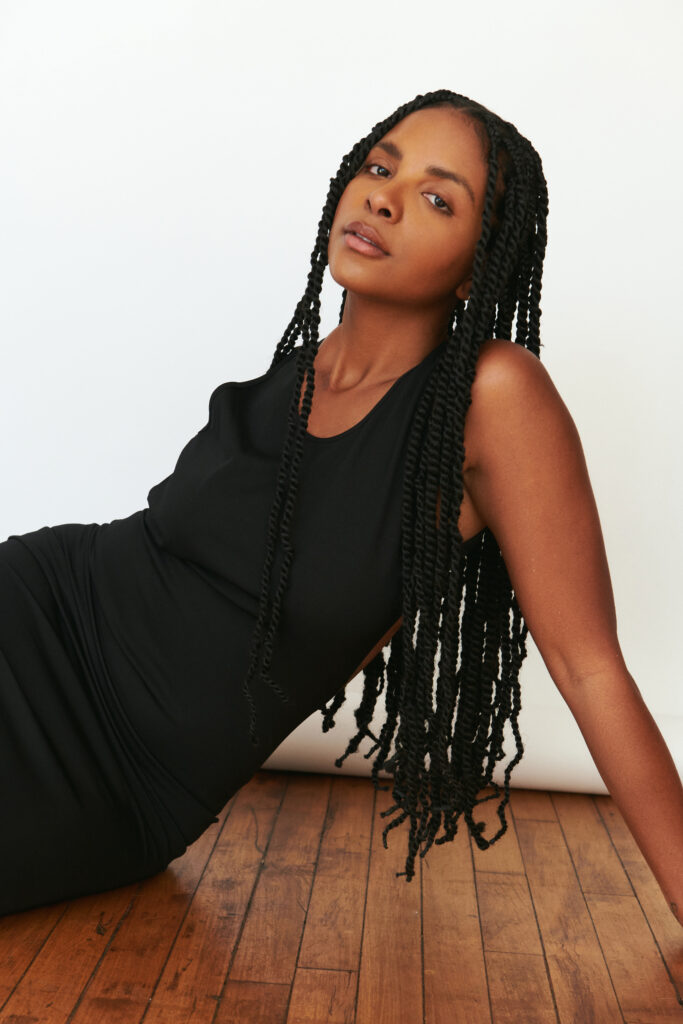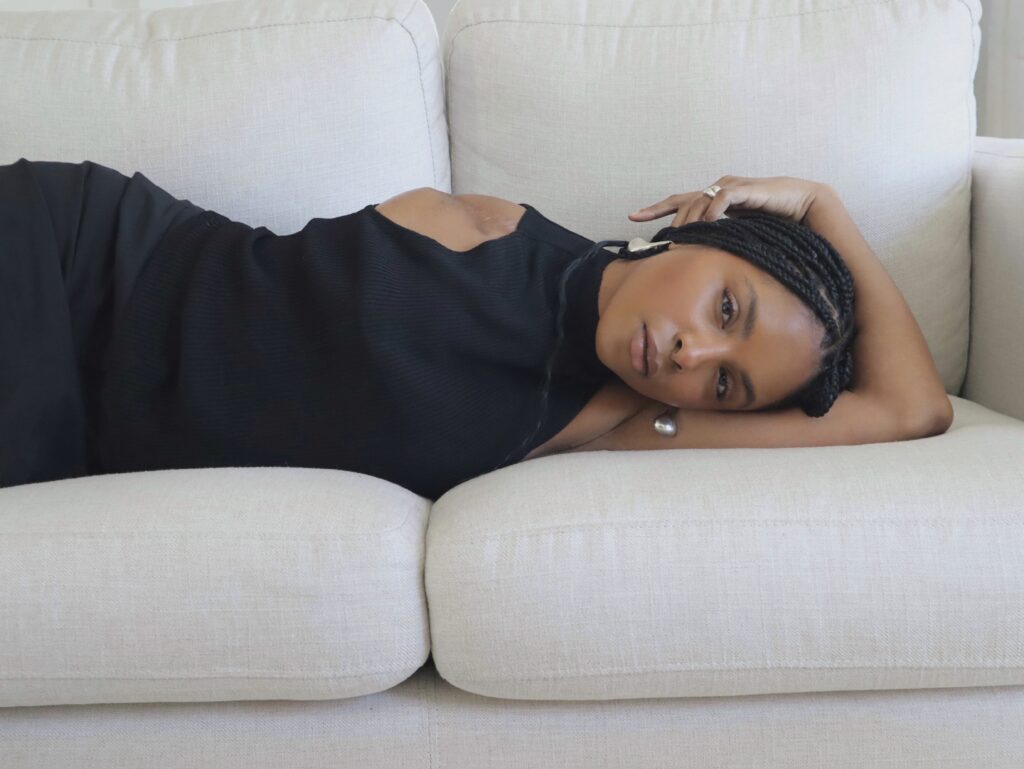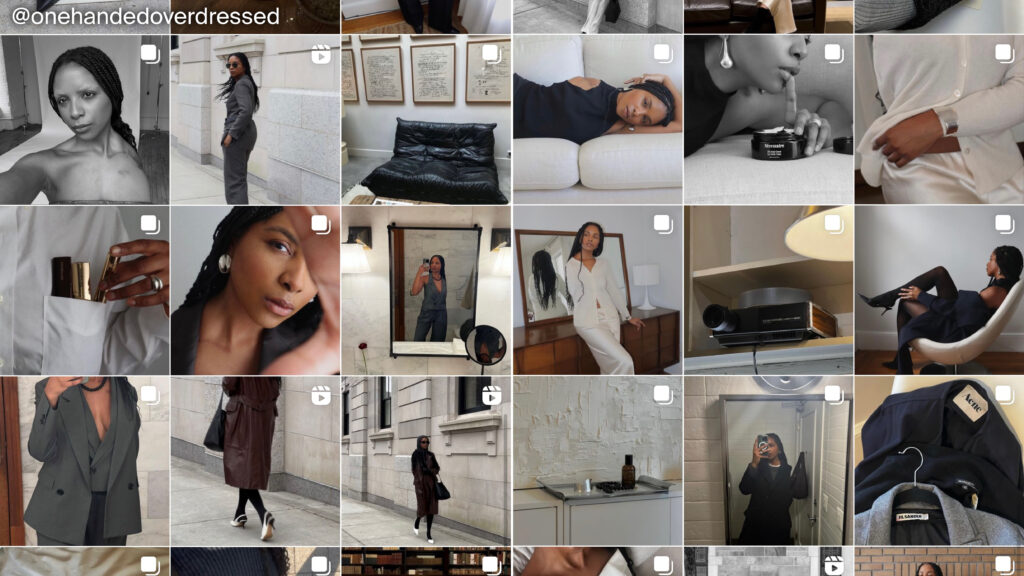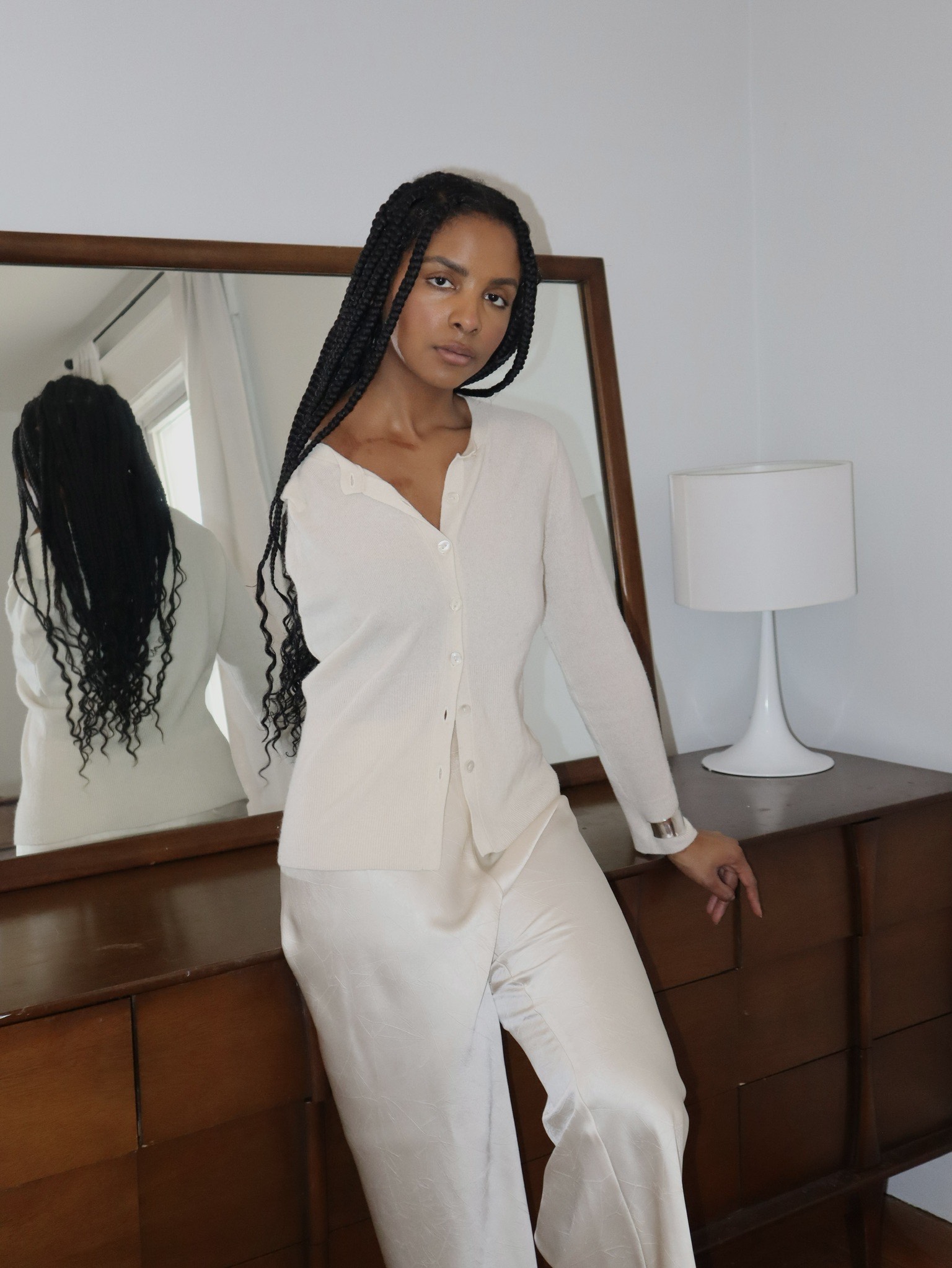Model, content creator, and disability advocate Maya Moore is changing the way we think about what it means to be disabled in this world. When she was 14 years old, she was diagnosed with a rare form of cancer and at 17, had her arm amputated.
Since then she’s had to contend with the stigma of wearing a prosthetic arm, ableism in fashion & beyond, as well as simply navigating through and existing in a world that is way more inaccessible than we realize.
I met Maya through Instagram a couple years ago and I’ve learned so much from her through her disability advocacy. Adaptive fashion and disability visibility aren’t topics that are often highlighted in beauty & fashion discourse, so I wanted to chat with Maya about both disability & ableism at the intersection of beauty and fashion.
In Conversation with Maya Moore

"Knowing we exist isn't enough. You need to ask, include, and uplift us."
What is your story? Why did you decide to use your platform for disability visibility?
I was diagnosed with a rare form of cancer when I was 14 and after a short period in remission, the cancer returned at 17 I learned that I’d have to have my arm amputated if I wanted to survive. The prospect of losing my arm and having a physical disability terrified me to the point that I considered not going through with the amputation.
At the time, the only representation I saw were people who had lost limbs in combat, paralympians, or people featured in medical textbooks. The images I saw were accompanied by words like “deformed” and made me think that I’d never be beautiful or desirable. Narratives about other amputees that had “overcome” their disability by making it to the Olympics made me feel that I’d have to be extraordinary in order to be valuable. When I started my Instagram, I wanted to challenge the idea that I had to overcome having lost my arm and above all I wanted to help create the representation I wish I had at 17.
How can fashion brands do better in regards to being more inclusive of people with disabilities?
Knowing we exist isn’t enough. You need to ask, include, and uplift us. There are so many different types of disabilities, so the best way to start is to actively engage different sectors of the disability community and ask how you can make your brand a welcoming and safe space (i.e. in your designs, stores, advertising; anywhere we can see that you’ve considered us).
The second piece is including us as thought partners when restructuring your outreach, business practices, designs, etc. by hiring us.
Lastly, is to uplift. The disabled community as a whole is extremely creative and thoughtful—in large part because we’ve had to find ways to maneuver and thrive in a world not built for us. So many advocates, activists, and change makers have already made strides in fashion, so finding ways to uplift the work of people already doing life changing work is crucial.
As an amputee model, have you found that sets for photoshoots are accessible and inclusive?
Unfortunately for the most part, no. I’ve shown up to sets before where I’ve had to bring all of my own clothes and where there were very few pieces that I could wear without my prosthetic.
I’ve shown up on sets where there weren’t Black hair stylists or stylists that had experience with Black hair. I think that things are incrementally getting better as more disable and diverse models enter the workforce, and brands continue to pledge their commitment to accessibility and inclusion.
"Brands who don't meet the moment and find real ways to engage with and include disabled people in all aspects of their business model will get left behind"

I’ve noticed that more models with disabilities are being featured in campaigns more than ever before and more brands are coming out with adaptive lines (such as Tommy Hilfiger Adaptive or Target’s adaptive clothing sections, for example). What do you think pushed this forward?
I think that we’re seeing this level of representation because of activists and disabled icons who lived out loud and paved the way like Jillian Mercado and Mama Cax—along with others who alerted brands to our existence as worthy consumers that should be designed for and catered to. Brands are genuinely meeting the moment in a lot of ways, but it pays to be inclusive. Brands who don’t meet the moment and find real ways to engage with and include disabled people in all aspects of their business model will get left behind.
Have you noticed a general shift (in either a positive or negative direction) in the general populations’ consciousness of disability awareness and rights in recent years?
Twenty-six percent of adults in the United States have some type of disability and we’ve gained a better collective understanding of all the types of visible and invisible disabilities that make up the disability community which has contributed in this positive shift. As a result, I’ve seen more representation in the media than I ever have and I hope this continues to shift attitudes about what disability is and what it looks like. The long-term goal will always be deconstructing abelism and rebuilding a more inclusive and accessible world.
Here at SKNFLUENCR, we like to ask questions that other platforms might shy away from, in an attempt to educate our audience and bring awareness to a myriad of different issues. What do you wish the general population would know about a typical day to day for you?
That the world is a lot more inaccessible than people realize—whether that’s the automatic door that’s not working or the fact that disabled people are less likely to work full-time or year round which contributes to a significant pay gap when compared to non-disabled people. There are times where I am dependent on the kindness of a stranger to open a door for me if I’m carrying something and there are times where I feel infantilized when someone insists on doing something for me, like zipping my jacket when I didn’t ask for help. That can sometimes be a very anxiety triggering way to live—not knowing if help will be there when I need it and not being given the opportunity to refuse it when I don’t.
I’ve really embraced Crip Time in my work online this year. Crip Time is a term that comes from the disabled experience to describe our unique and complex relationship to time. Embracing it means that I’ve understood that it takes me longer to do some things and get some places or that my path through a lot of life milestones has looked different because of my disability. It also means I’ve begun to advocate for longer deadlines sometimes, and to not feel bad asking for accommodations that help me navigate this world better.
Where do you find inspiration in fashion? How have you developed your personal style?
I find inspiration in fashion in the Black community, the queer community, my mom’s and aunt’s 90’s wardrobes, Instagram and Pinterest. It took a long time for me to feel comfortable in clothes after my amputation and I felt like a new level of comfort was really solidified when I stopped wearing my prosthetic arm. I started to have the right sleeves taken off of my favorite pieces and for the first time really started to understand what it means to build a wardrobe of pieces that make you feel good and can last different seasons. I’d find core pieces that were menswear inspired and slightly oversized then pair them with one of a kind pieces like a sheer striped collared blouse. Or a pair of croc embossed kitten heels and a pair of vintage Levi’s 501 jeans.
What are your favorite fashion brands at the moment?
I really like COS, Jil Sander, Dries van Noten, and vintage Tom Ford era Gucci. I have a lot of vintage pieces that have no tags and those rank highest amongst my favorites. I have slowly collected new and vintage pieces that I’ll get tailored (to remove the right sleeve), because of this I try to be really intentional when I purchase things because I know I’ll wear them for a very long time. I really love a good statement t-shirt and my one from Abilitee that says “Don’t Be Ableist Y’all” is the best one I own.

You have a great eye and I absolutely adore the aesthetic of your Instagram! How do you juggle the balance between advocacy/education, creativity, and aesthetics with your platform?
I have always swooned at the idea of a “disability mood board”. I wanted to see disabled it girls, people with disabilities living well and being social when I became disabled at 14. Having a disability felt like it was in direct conflict with those things and feelings of exclusion loomed large in my life. When I first started my Instagram I did so with the mission to create the inclusion I wish I had then. I try to balance the polished, chic aesthetic with captions that talk about my experiences—struggling to advocate for accessibility in my life at times and getting tired when I have to do it too often or struggling with anxiety and depression which are intrinsically tied to my disability.
Instagram can sometimes feel superficial so I think it’s important to break through that wall to show the real you as much as you feel comfortable and in a way that feels authentic to you. For me that also means talking about the ways I’ve encountered ableism both internally and externally and what we can all be doing to unlearn that and be better allies.
